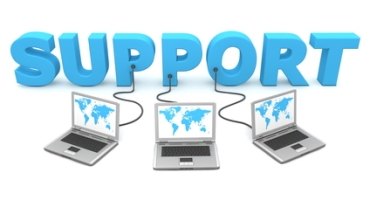In today's fast-paced business environment, the performance of IT services has never been more important. Organizations rely heavily on technology to optimize operations, improve productivity, and maintain a leading edge. From managing complex cloud infrastructures to implementing robust cybersecurity measures, the effectiveness of IT services directly impacts a company's ability to reach its goals. Understanding the key metrics for measuring IT service performance can enable businesses to make informed decisions that eventually lead to increased efficiency and expansion.
While businesses navigate the constantly changing landscape of technology, they face a multitude of challenges, such as managing in-house IT resources versus choosing managed IT services. With the rise of remote work and the growing importance of data protection, companies must prioritize their IT strategies to protect their operations and customer data. This article will examine crucial metrics that can help organizations measure IT service performance, improve overall efficiency, and ensure they are adequately positioned to adapt to future trends in the IT sector.
Comprehending IT Solutions

IT services encompass a wide range of tech support and solutions that businesses rely on to operate effectively and stay competitive. These services can include anything from managed IT services, offering comprehensive support and proactive system management, to particular support functions such as network management, cybersecurity, and data handling. Comprehending what IT services entail is crucial for businesses seeking to leverage technology for growth and sustainability.
One crucial aspect of IT services is their capability to enhance business efficiency. By utilizing expert IT support, companies can simplify operations, improve their workflows, and ensure that their technology infrastructure is operating effectively. This not only reduces downtime but also allows employees to focus on their core responsibilities rather than resolving technology issues. Moreover, effective IT services can help organizations adapt to new technologies and industry shifts, making them more agile in the face of transitions.
As businesses consider their IT requirements, they must acknowledge the distinction between in-house IT teams and managed IT service providers. In-house teams may offer a more personalized approach and direct oversight, while managed services can provide scalability, specialized expertise, and cost-effective solutions that allow businesses to focus on their core goals. Ultimately, grasping IT services is essential for making informed choices that align technology with business objectives.
Improving Organizational Effectiveness with IT Support
In today's dynamic business environment, the role of IT assistance has become crucial in improving overall efficiency. With technology advancing rapidly, organizations must capitalize on IT services to optimize their operations. By adopting advanced https://astt.net.au/techcare-it-support-wollongong/ and solutions, businesses can simplify repetitive tasks, which not only saves time but also facilitates employees to focus on core functions that drive growth. This move towards efficient workflows results in greater productivity and a more efficient allocation of resources.
Furthermore, effective IT support contributes significantly to reducing downtime, which is essential for upholding business operations. Regular maintenance and quick technical support ensure that systems stay operational and any challenges are promptly resolved. This proactive approach reduces the risk of productivity losses due to technical failures, allowing businesses to maintain a steady pace and meet their targets without unnecessary delays.
Additionally, IT assistance plays a key role in boosting collaboration within teams. With the implementation of cloud-based services and collaboration tools, employees can communicate and share information seamlessly, regardless of their geography. This availability supports remote work and encourages a more agile working environment. Ultimately, investing in IT support not only boosts operational efficiency but also fosters a culture of creativity and collaboration that can propel businesses ahead.
Information Security and Information Protection Approaches
To successfully safeguard IT services, businesses must implement robust cybersecurity measures that deal with both current and upcoming threats. This starts with a comprehensive risk assessment to pinpoint vulnerabilities within the company's IT framework. Regularly updating software and hardware, together with timely patch management, ensures that systems stay resilient against exploitation. Additionally, educating employees on spotting phishing attempts and additional social engineering tactics is crucial, as human error remains one of the main entry points for cyber threats.
Information safety measures are equally important in maintaining business continuity in the face of potential cybersecurity incidents. Organizations should implement encryption techniques to safeguard sensitive information, both at rest and in transit. Employing multi-factor authentication adds an additional layer of security, making it significantly harder for unauthorized users to access vital systems. Beyond preventive measures, businesses must also have a explicitly stated response plan to manage incidents efficiently, which includes outlining roles, communication protocols, and recovery procedures.
Finally, scheduled security audits and compliance checks are essential for maintaining a strong cybersecurity posture. These audits help in recognizing gaps in security practices and ensuring that the organization adheres to relevant regulations and standards. Leveraging managed IT services can also enhance a firm's cybersecurity efforts by providing access to professional teams that can monitor systems continuously, respond to threats in actual time, and implement advanced security solutions. This proactive stance not only shields data but also fosters confidence among customers and stakeholders, solidifying the organization's reputation in the industry.
